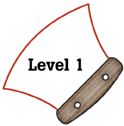
Alaska Science
Key Element A14c
A student who meets the content standard should understand that a small change in a portion of an environment may affect the entire environment (Interdependence).
 |
Alaska Science A student who meets the content standard should understand that a small change in a portion of an environment may affect the entire environment (Interdependence). |
|
Performance Standard Level 1, Ages 5–7
|
|
|
|
Sample Assessment Ideas
|
Standards Cross-References
|
||
|
National Science Education Standards An organism’s patterns of behavior are related to the nature of that organism’s environment, including the kinds and numbers of other organisms present, the availability of food and resources, and the physical characteristics of the environment. When the environment changes, some plants and animals survive and reproduce, and others die or move to new locations. (Page 129) All organisms cause changes in the environment where they live. Some of these changes are detrimental to the organism or other organisms, whereas others are beneficial. (Page 129) Changes in environments can be natural or influenced by humans. Some changes are good, some are bad, and some are neither good nor bad. Pollution is a change in the environment that can influence the health, survival, or activities of organisms, including humans. (Page 140) |
Benchmarks Animals eat plants or other animals for food and may also use plants (or even other animals) for shelter and nesting. (Page 116) Living things are found almost everywhere in the world. There are somewhat different kinds in different places. (Page 116) |
|
Table of Contents | Return to Alaska Native Knowledge Network